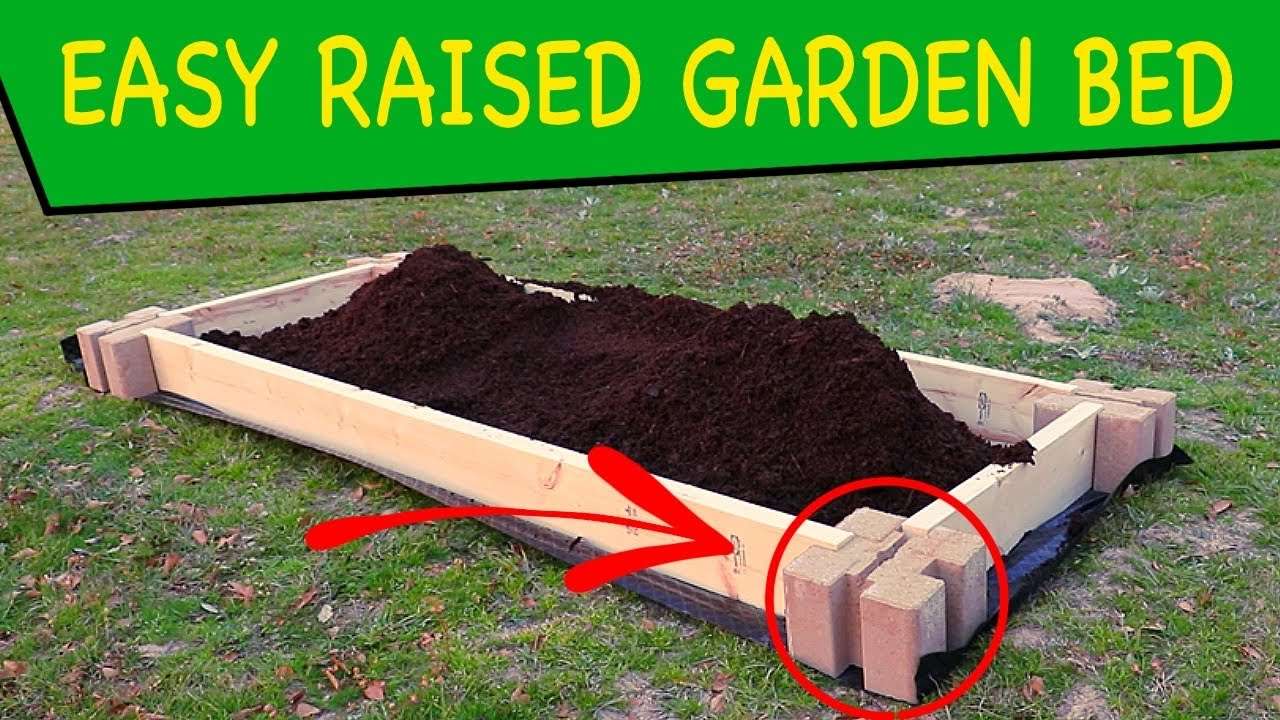In this article, we’ll discuss the topic of building raised beds without walls and how it relates to off-grid living and gardening. We’ll explore whether raised beds really need walls and the advantages and disadvantages of both options. By the end, you’ll have a better understanding of whether or not you should consider building raised beds without walls for your gardening needs.
Building Raised Beds Without Walls
When it comes to gardening, raised beds are a popular choice due to their numerous benefits. They provide improved soil drainage, better weed control, higher yields, and easier access for gardening tasks. Traditionally, raised beds are built with walls to contain the soil. However, there is an innovative technique that involves building raised beds without walls. In this article, we will explore the advantages of this approach, the materials needed, the preparation process, and how to maintain these beds effectively.
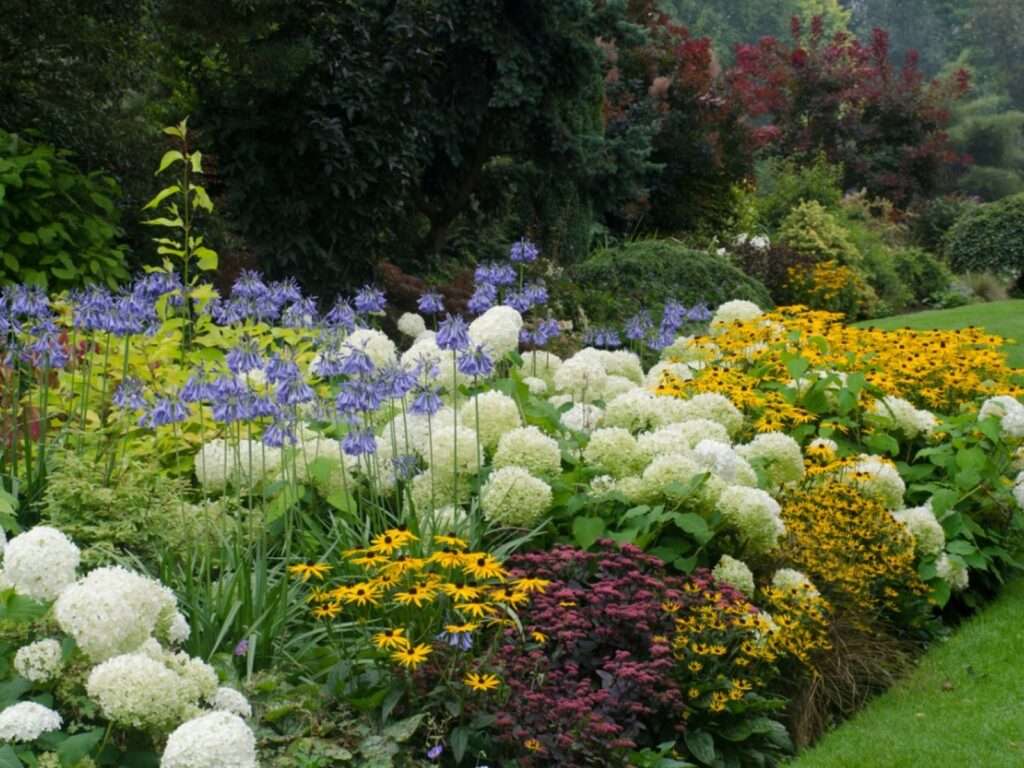
Improved Soil Drainage
One of the main benefits of raised beds, whether with or without walls, is improved soil drainage. The elevated structure prevents water from pooling in the soil, ensuring that plants’ roots do not become waterlogged. Raised beds without walls allow excess water to flow freely, preventing soil erosion and creating a well-drained environment that promotes healthy root development.
Better Weed Control
Weeds can be a persistent headache for any gardener. In raised beds without walls, it is easier to control weeds compared to traditional raised beds. Without the confines of walls, you have more accessibility to pull out weeds by hand or use gardening tools. This makes it simpler to keep your raised beds clean and free from weed competition, ensuring that your plants have the best chance to thrive.
Higher Yields
Raised beds, regardless of whether they have walls or not, have been shown to produce higher yields compared to traditional in-ground gardening. The fertile soil in raised beds is a result of the controlled environment, allowing you to optimize nutrient levels and provide the ideal growing conditions for your plants. With raised beds without walls, the roots of your plants have even more space to spread out, leading to increased nutrient uptake and improved growth.
Easier Access for Gardening Tasks
One of the advantages of raised beds without walls is the easy access they provide for gardening tasks. Without walls restricting movement, you can conveniently reach every corner of the bed to sow seeds, transplant seedlings, prune plants, and harvest your crops. This accessibility reduces strain on your back and knees, making gardening a more enjoyable experience.
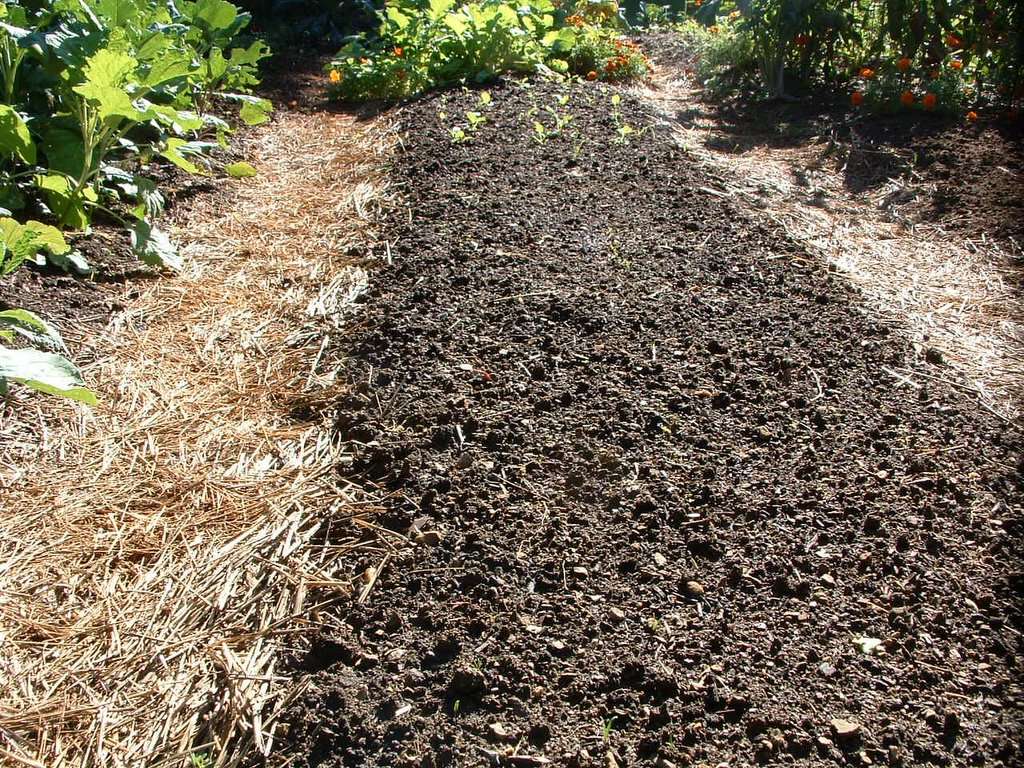
Traditional Raised Beds vs. Raised Beds Without Walls
Definition and Purpose of Traditional Raised Beds
Traditional raised beds, as commonly known, are built with walls or borders made of various materials such as wood, stone, or concrete. The purpose of these walls is to hold the soil in place, creating a defined area for the plants to grow. The walls act as a barrier, preventing soil erosion and keeping the garden organized.
Advantages of Raised Beds Without Walls
While traditional raised beds have their benefits, raised beds without walls offer several advantages as well. Firstly, they provide more flexibility in terms of bed size and shape. Without the constraint of walls, you can create raised beds of any dimensions that suit your gardening needs.
Additionally, raised beds without walls allow for better air circulation and sunlight exposure. These factors play a crucial role in promoting healthier plants and reducing the risk of diseases that thrive in moist environments. The open design also makes it easier to incorporate season-extending techniques, such as row covers and hoop houses, to protect your crops from frost or prolong the growing season.
Materials for Building Raised Beds Without Walls
Choosing Suitable Materials
When building raised beds without walls, it is important to choose suitable materials that are durable, non-toxic, and can withstand the elements. Cedar and redwood are popular choices for their natural resistance to decay and insect damage. These hardwoods are also long-lasting and visually appealing in any garden setting.
If you prefer an eco-friendly option, consider using reclaimed materials such as old pallets or recycled plastic. These materials not only divert waste from landfills but also provide a cost-effective solution for building raised beds without walls.
Sustainable Options for Eco-Friendly Gardening
Sustainability is a growing concern for many gardeners. There are several eco-friendly options for building raised beds without walls. For example, using salvaged bricks or stones can create a rustic and visually appealing look while reducing the need for new materials.
Another sustainable option is using corrugated metal or galvanized steel for the sides of the raised beds. These materials are resistant to corrosion and can last for many years, reducing the environmental impact of your gardening endeavors.
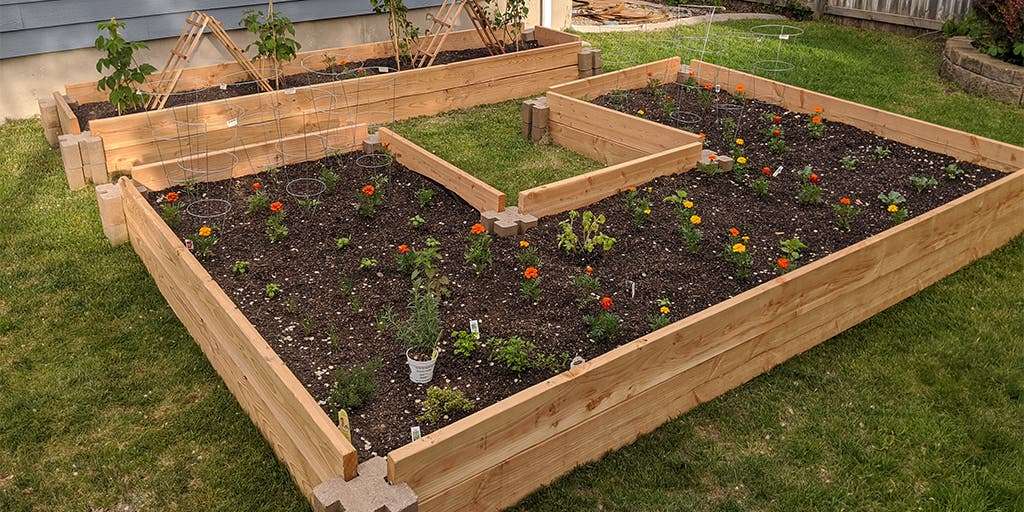
Preparing the Site for Raised Beds Without Walls
Selecting a Sunny Location
Before constructing raised beds without walls, it is crucial to choose a sunny location for optimal plant growth. Most vegetables and herbs require at least six hours of direct sunlight per day, so select an area of your yard or garden that receives ample sunlight.
Clearing the Area of Any Vegetation
Once you have determined the ideal location for your raised beds, clear the area of any existing vegetation. Remove weeds, grass, and any other obstacles that may hinder the construction process. This ensures that your raised beds have a clean foundation to start with.
Leveling the Ground
Before building raised beds without walls, it is important to level the ground to create a stable surface for your beds. Remove any bumps or depressions by using a shovel and rake, ensuring that the soil is even. This will help prevent water from pooling in certain areas and ensure consistent plant growth throughout the raised beds.
Building Raised Beds Without Walls
Determining the Size and Shape of the Beds
Once the site is prepared, you can determine the size and shape of your raised beds without walls. Consider the space available and the types of plants you wish to grow. Rectangular beds are common, as they are easy to construct and allow for efficient use of space. However, you can also experiment with circular or irregular shapes to add visual interest to your garden.
Creating a Frame with the Chosen Materials
Using the chosen materials, create a frame for your raised beds. If you are using reclaimed wood or pallets, cut them to the desired lengths and secure them at the corners using screws or nails. For corrugated metal or galvanized steel, secure the panels together with metal brackets or screws.
Securing the Corners and Edges
To ensure the stability of your raised beds without walls, it is important to secure the corners and edges. Using L-shaped brackets or metal corner braces, attach the frame to the ground or stakes driven into the soil. This prevents the raised beds from shifting or collapsing over time.
Adding a Protective Layer to the Bottom
To prevent weeds from growing up through the raised beds, it is recommended to add a protective layer to the bottom. Lay a permeable landscape fabric or several layers of newspaper on the ground before filling the beds with soil. This barrier will deter weed growth while still allowing for adequate drainage.
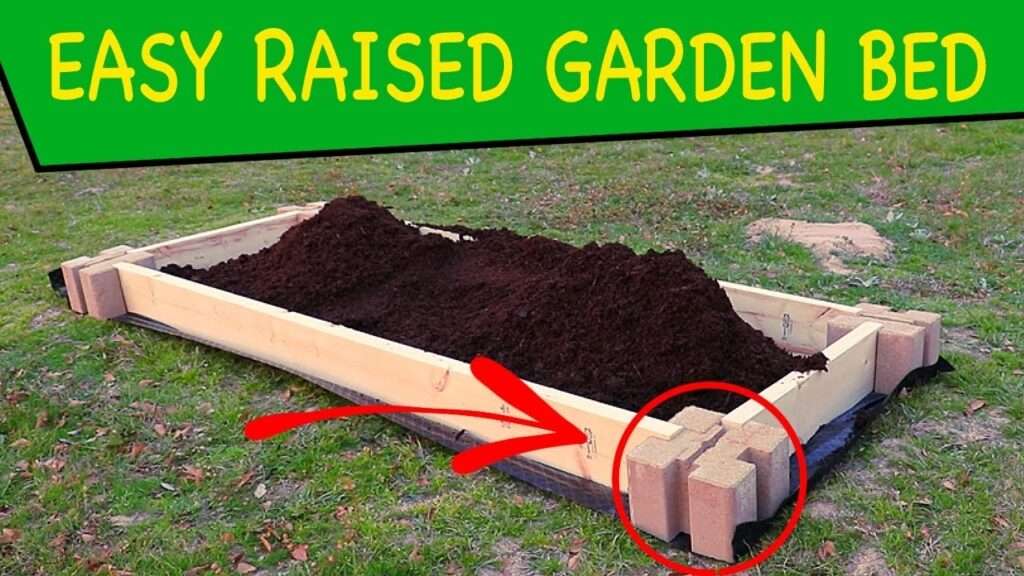
Choosing Soil and Compost for Raised Beds Without Walls
Understanding Soil Composition
Soil composition is vital for the success of your raised beds without walls. It is important to have a balanced blend of sand, silt, and clay, along with organic matter, to promote healthy plant growth. The ideal soil composition allows for good drainage while retaining enough moisture for the plants’ roots.
Selecting Suitable Soil and Compost Mixture
Fill your raised beds with a mixture of topsoil, compost, and organic matter. The topsoil provides the mineral nutrients required for plant growth, while compost enriches the soil with organic matter and improves its structure. Aim for a ratio of 60% topsoil and 40% compost to ensure an optimal growing environment for your plants.
Benefits of Organic Fertilizers
When gardening in raised beds without walls, organic fertilizers are highly recommended. They nourish the plants while promoting soil health and minimizing environmental impact. Organic fertilizers release nutrients slowly, providing a consistent supply of essential elements without burning the plants’ roots. Compost, worm castings, and well-rotted manure are excellent choices for organic fertilizers.
Planting in Raised Beds Without Walls
Choosing Appropriate Plant Varieties
When planting in raised beds without walls, it is important to choose appropriate plant varieties that thrive well in this environment. Consider the mature size and growth habit of each plant to ensure that they have enough space to grow without competing for resources. Some plants that thrive in raised beds include tomatoes, peppers, lettuce, herbs, and strawberries.
Spacing and Arrangement of Plants
Proper spacing and arrangement of plants in raised beds without walls are crucial for preventing overcrowding and maximizing yields. Follow the spacing guidelines provided on seed packets or plant labels to ensure that each plant receives adequate sunlight, air circulation, and access to nutrients. Utilize companion planting techniques to improve pest control and maximize space usage.
Companion Planting for Pest Control
Companion planting is an effective technique when gardening in raised beds without walls. Certain plants have natural pest-repellent properties when grown together. For example, planting marigolds alongside tomatoes can deter pests such as nematodes. Basil also acts as a natural repellent for mosquitoes and flies when grown interspersed with other plants.

Watering and Irrigation in Raised Beds Without Walls
Importance of Proper Watering
Proper watering is essential for the success of your plants in raised beds without walls. Unlike traditional in-ground gardening, raised beds tend to dry out faster due to increased drainage. Schedule regular watering sessions to ensure that the soil remains consistently moist, but avoid overwatering, as this can lead to root rot and other moisture-related issues.
Methods for Efficient Irrigation
There are several methods for efficient irrigation in raised beds without walls. Drip irrigation systems are a popular choice, as they deliver water directly to the plants’ roots while minimizing evaporation. Soaker hoses can also be used to ensure deep and thorough watering. Using a timer or moisture sensor can further help optimize water usage and prevent water wastage.
Mulching to Retain Moisture
Mulching is an effective technique to retain moisture in raised beds without walls. Apply a layer of organic mulch, such as straw or wood chips, around your plants. This helps to conserve soil moisture, inhibit weed growth, regulate soil temperature, and prevent soil erosion during heavy rains.
Maintaining Raised Beds Without Walls
Regular Weeding
Just like any garden, raised beds without walls require regular weeding to keep them free from unwanted plants. Regularly inspect your raised beds for any signs of weed growth and promptly remove them by hand or using gardening tools. Maintaining a weed-free environment ensures that your plants receive the necessary nutrients and space to flourish.
Adding Organic Matter to Improve Soil Fertility
To maintain optimal soil fertility, it is important to regularly add organic matter to your raised beds. Organic matter, such as compost, leaf mold, or well-rotted manure, replenishes essential nutrients, improves soil structure, and enhances beneficial microbial activity. Incorporate organic matter into the top layer of soil or add it as a side dressing around existing plants.
Troubleshooting Common Plant Issues
As a gardener, it is essential to stay vigilant and address any potential plant issues promptly. Raised beds without walls may still be susceptible to pests, diseases, or nutrient deficiencies. Regularly inspect your plants for signs of distress, including yellowing leaves, wilting, or abnormal growth. Identify the issue and take appropriate measures, such as using organic pest control methods or amending the soil with specific nutrients.
Extending the Growing Season in Raised Beds Without Walls
Using Row Covers and Hoop Houses
One of the advantages of raised beds without walls is their flexibility when it comes to season extension. Row covers and hoop houses are effective tools for protecting your plants from frost and cold temperatures, enabling you to extend the growing season. These covers can be easily added and removed as needed, allowing you to garden earlier in spring and later into fall.
Introducing Season-Extending Techniques
In addition to row covers and hoop houses, there are several other season-extending techniques that can be employed in raised beds without walls. For example, using black plastic mulch can help warm up the soil in early spring, providing a favorable environment for plant growth. Cold frames and mini-greenhouses are also effective for growing heat-loving crops or starting plants from seed earlier in the season.
Harvesting from Raised Beds Without Walls
Knowing When to Harvest Different Crops
Knowing when to harvest different crops is crucial for ensuring maximum flavor and nutritional value. Each plant has specific signs to look for, such as color, texture, or size, to determine their readiness for harvest. Research the specific harvesting guidelines for your chosen crops to ensure the best quality and taste.
Proper Harvesting Techniques
Proper harvesting techniques are important to minimize damage to your crops and ensure their longevity. Use clean gardening tools, such as pruners or scissors, to harvest fruits, vegetables, or herbs. Cut or pick them at the appropriate stage of ripeness to enjoy the freshest produce from your raised beds without walls.
Succession Planting for Continuous Yields
To maximize the productivity of your raised beds without walls, consider practicing succession planting. This involves planting new crops as soon as previous ones are harvested. By staggered sowing or transplanting, you can ensure a continuous supply of fresh produce throughout the growing season, optimizing the use of your raised beds.
Incorporating Off Grid Living with Raised Beds Without Walls
Exploring the Connection Between Off Grid Living and Gardening
Off-grid living and gardening go hand in hand, as both promote self-sufficiency and sustainability. By growing your own food in raised beds without walls, you reduce reliance on external food sources and have more control over the quality and safety of your produce. Gardening also provides an opportunity to reconnect with nature and reduce your carbon footprint.
Utilizing Renewable Energy for Gardening Tasks
To enhance your off-grid gardening experience, consider utilizing renewable energy for various gardening tasks. Solar-powered water pumps, pond aerators, or garden lights can be used to minimize energy consumption and reduce reliance on traditional power sources. By harnessing the power of the sun, you can make your gardening endeavors more sustainable and eco-friendly.
Benefits of Gardening in Raised Beds Without Walls
Reduction in Water Usage
Gardening in raised beds without walls can lead to a reduction in water usage compared to traditional in-ground gardening. The efficient drainage system allows excess water to escape, preventing waterlogging and minimizing the risk of root rot. With proper irrigation techniques, you can optimize water usage and conserve this precious resource.
Minimization of Material Waste
Building raised beds without walls can contribute to the minimization of material waste. By using reclaimed or recycled materials, you divert waste from landfills and give them new life as functional gardening structures. This environmentally conscious choice helps reduce the demand for new resources and promotes a more sustainable gardening practice.
Promotion of Biodiversity
Raised beds without walls provide an opportunity to promote biodiversity in your garden. By attracting beneficial insects, such as bees and butterflies, and creating a diverse habitat, you can enhance the overall health of your garden ecosystem. This, in turn, reduces the need for chemical pesticides and fosters a more balanced and sustainable environment for both plants and wildlife.
Conclusion
Building raised beds without walls is an innovative gardening technique that offers numerous benefits. Improved soil drainage, better weed control, higher yields, and easier access for gardening tasks are just a few advantages of this approach. By selecting suitable materials, preparing the site, and properly maintaining the beds, you can enjoy a thriving garden and abundant harvests. Furthermore, gardening in raised beds without walls aligns well with off-grid living, promotes sustainability, and provides a rewarding and eco-friendly gardening experience. So why not give it a try and reap the rewards of this innovative gardening technique? Happy gardening!

